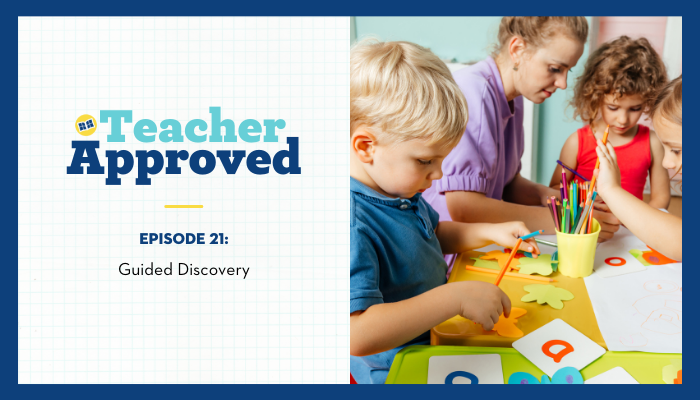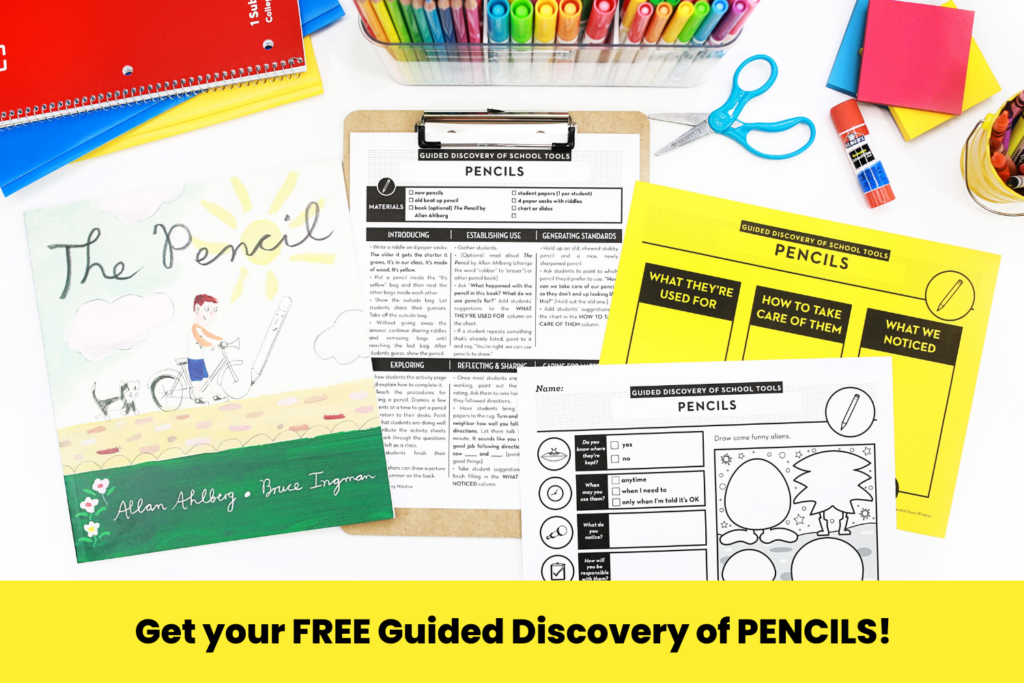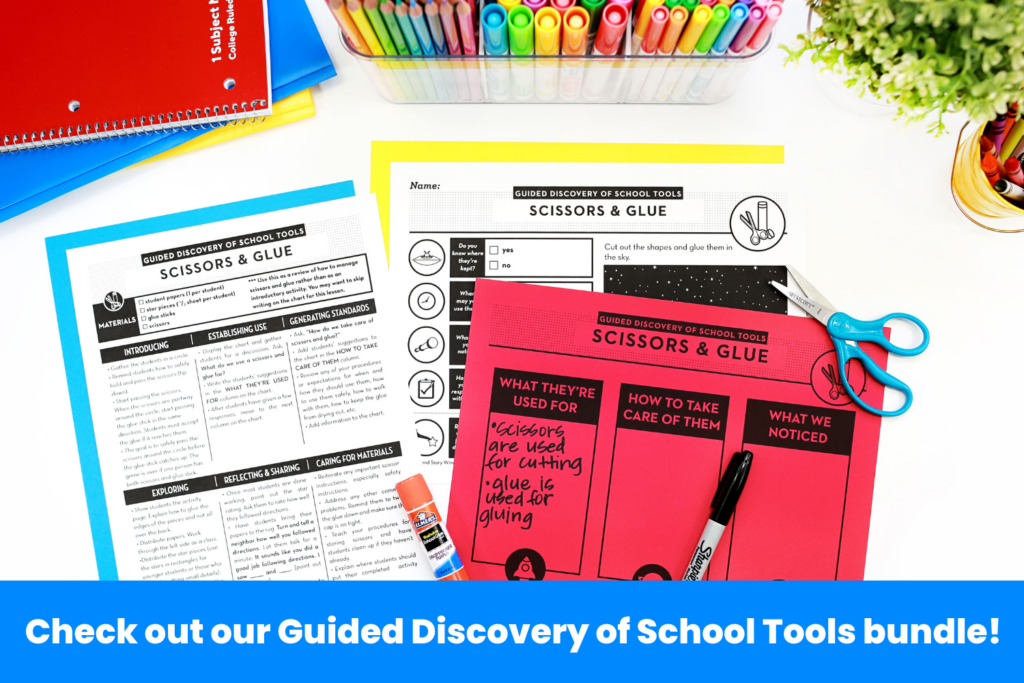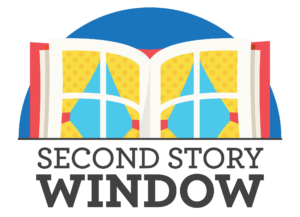
Click below to listen to Guided Discovery:
Listen on Apple Podcasts | Listen on Spotify | Listen on Stitcher
Morning Message:
[00:57] What is something you like that most people can’t stand?
We thought this was such a fun question, but loved the responses even more! We mentioned canceled plans, which is an introvert’s dream, and things revolving around vegetables. Those include broccoli and a zucchini casserole we grew up with.
Our community responses included filling out forms, doing the dishes (especially while listening to podcasts!), dill pickles and black licorice (but don’t worry, not together!), laundry, grocery shopping, whistling, and brussel sprouts.
We’d love to hear your responses to this question and future questions, so let us know over on Instagram!
Here’s an overview of episode 21:
When students enter your classroom the first day and weeks of school, there’s a list of things to do and go over that is a mile long. Towards the top of that list is going over classroom expectations and introducing materials, routines, and procedures.
Standing at the front of the room explaining each of these tasks is not only boring, but ineffective. Instead, we like to use an engaging method for introducing routines and procedures called Guided Discovery. In today’s episode, we’re sharing the benefits of guided discovery and how to implement it in your classroom.
Guided Discovery is a fun and interactive way for you to introduce anything in your classroom. It works by actively involving students in developing the expectations around the materials they’ll be using or procedures they’ll be performing. Because when students play a role in developing the standards, they’re more likely to follow through with them. That’s the goal, right?
When implementing Guided Discovery, we’ve made a 6 step process that we adapted from Responsive Classroom who published The First Six Weeks of School. Throughout the episode, we break down each step, its benefits, and examples of how to use it in the classroom.
With each step, you’ll see the countless benefits of Guided Discovery and how it puts the kids at the center of what is normally a very teacher-driven process. Every step of the way, the kids are offering observations, having their suggestions validated, acting on ideas, and sharing their findings with others.
Although implementing Guided Discovery in your classroom will take time, intentionally shaping your classroom environment in the first weeks of the year results in positive benefits for the rest of the school year. Establishing expectations and going over procedures and routines are already on your to-do list, so why not use Guided Discovery to leave your students knowing your expectations and how to manage themselves in your classroom?
In this episode on guided discovery, we discuss:
- An introduction to Guided Discovery and how to use it in your classroom
- The 6 step process of implementing Guided Discovery
- Why having students involved in the process is more effective
- How Guided Discovery is a time commitment, but worth it in the long run
This week’s teacher approved tip:
[13:02] Post your expectations where kids can reference them.
We all go over expectations at the beginning of the school year, but it’s inevitable that a student, or a few, will forget what to do throughout the year. Instead of constantly having to verbally explain, post your expectations for them to reference!
Now, remember, this needs to be in a place where they find the material, actively doing the task, not somewhere that’s not close to what they’re doing. This will make students more independent and accurate when following through with your expectations.
Want to take it a step further? Add photos to illustrate each step! This will help your language learners and any students who process differently and need visual reminders on how to complete something.
What we’re giving extra credit to this week:
[14:11] Emily is giving extra credit to Part of Your World by Abby Jimenez
[15:35] Heidi is giving extra credit to Barbershop Books
Resources:
- Guided Discovery of School Tools Resource Bundle
- Get a Free Guided Discovery of Pencils
- Guided Discovery Blog Post
- The First Six Weeks of School Book
- Send us your Teacher Approved Tip!
- Connect with us on Instagram @2ndstorywindow
- Shop our teacher-approved resources
- Join our Facebook group, Teacher Approved
If you enjoyed this episode, you’ll love these too:
Read the transcript for episode 21, Guided Discovery:
Hey there, thanks for joining us today. In today’s episode, we’re gushing about the benefits of Guided Discovery, our favorite, and we’ll share a teacher approved tip for helping keep everybody on track.
We start our episodes with a morning message just like we used to do at morning meeting in our classrooms. This week’s morning message is What is something you like that most people can’t stand? What do you think Heidi? Probably canceled plans. That’s an introverts dream. If you really wanna make me happy, like make plans with me and then canceled the day before, and I’ll be more happy than if we’d done whatever we’d plan to do. I completely understand and agree. What about you Emily, what do you like? This was kind of hard. I think I’d have to say broccoli. That’s the vegetable that’s not popular that I’ve kind of always loved. I didn’t notice about you and new information. And in our family lore, there’s a zucchini casserole we grew up with that Heidi hates more than anything in the world. And I genuinely love it and just thinking about it. It made me want to have some so I guess that’s something I liked that most people can’t stand. I can’t I can’t even sorry. I’ll keep it all for me. We have some responses from our community. Chasse said filling out forms, Kelsey said doing the dishes because I love to listen to podcasts while doing it. I agree. That makes any chore million times easier. Janine said Dill pickles and black licorice, but not together. Oh, that’s good. I’m very glad she clarified. Sarah said I love doing laundry. I actually don’t mind laundry that much either. As long as I’m not too far behind. Kelly said grocery shopping. Oh, I hate grocery shopping know all about that grocery delivery. Kate said whistling that made me smile. My my son really likes whistling too and his sisters don’t that is also true. We have to have family rules about when we do and don’t whistle. And Christine said brussels sprouts. I actually really like Brussels sprouts do. I do like Brussels sprouts, but only if they’re roasted? Not steamed? Like we grew up with the worst. We’d love to hear your responses to our questions over on Instagram, you can find us at @2ndstorywindow and that is with a two.
We are excited today to get to talk about something near and dear to our hearts Guided Discovery. It may seem unusual that this is one of our favorite parts of teaching. But if you’ve tried it before, you know how great it is. And if this is a new idea for you, we’ll have you loving it by the end of this episode. So we first learned about Guided Discovery from the book The First Six Weeks of School. That’s not the first time we’ve mentioned that book and it won’t be the last we love it. And honestly, if you haven’t picked that book up yet, what are you waiting for? It’s an absolute gem. Don’t you think Heidi? Oh, absolutely. You can use Guided Discovery to introduce anything your students will need to use in your classroom. We most often use it to introduce supplies like crayons or glue. But you could use it to introduce the class library math centers are another area of your room. You can even use Guided Discovery to introduce a routine like journal writing or how to manage a Chromebook. If you’ve taught for a while you have probably done some version of this naturally. Let’s say you want to teach your expectations about scissors. The teacher might show where the scissors are stored explained where to get them and set a few rules about how to use them safely. And that’s fine. It’s better explain than to just turn kids loose with scissors and assume they know what to do and what not to do. But I think we can do better than fine. Yeah, we can. Guided Discovery works by actively involving students in developing the expectations around the materials they’ll be using. Because they play a role in developing the standards, they’re more likely to follow through with them. Guided Discovery can help you anytime you need to get your class excited about something. Anytime you need to generate standards and procedures around something or anytime you want to stretch your kids imaginations about when and how to use something.
Let’s say I’m wanting to set expectations for using scissors in the classroom. If I’m using Guided Discovery, I’m going to start with an introduction that piques their interest. Then I lead a discussion about appropriate use and expectations. I teach them where the scissors are stored, when they can use them, and how to handle them safely. I let them use scissors and then we reflect on how well they follow directions. Maybe you’re thinking, I don’t see what the big deal is kids have used scissors before. Well, imagine you’re a month into the school year. Your class is supposed to be cutting out their weekly word sort, Kumar can’t find the scissors that used to be in his pencil box, he comes to find you to ask what to do, you catch Olivia giving a trim to the end of her braid. A while later you realize Willow has bits of wood under her desk because she was trying to use her scissors to sharpen her pencil. We’ve all been there, you’ve now had the chance to teach three kids how to manage their scissors. And as you address the problems that crop up in the next eight months, you’ll get a chance to teach the other 25 kids in your class how to manage theirs. Your time is more valuable than this, your energy is more valuable than this. Even though it might feel like you’re wasting time and energy, by making a big deal out of something that should be obvious, you’re actually saving yourself time and energy down the road. Intentionally shaping your classroom environment in the first weeks of the year has results that will benefit them for all the weeks to come.
So how do you run a Guided Discovery? Responsive Classroom who published The First Six Weeks book have their official steps and we’ve tweaked them over the years to better fit our needs? Our first step is introducing. This can be as simple or as elaborate as you like. You could read a book about crayons before talking about crayons. I think The Day the Crayons Quit would be perfect, right? Yes, you could play hot or cold to find the item in your classroom. You could do a mystery box and have everyone touched the object without looking. You could give clues and have them guess what you’re thinking of. You could play Pictionary or hang man to try and guess the name of the item. It doesn’t have to be bigger, complicated. The goal is to find something that will get kids interested in whatever you’ll be talking about.
The second step is establishing use. This just means you ask the kids how you use the object in question. You can start with a standard question like, raise your hand, if you can tell me one way we use glue sticks and then go from there. We find it helpful to list the students ideas on a chart so that we can refer back to it later.
Next, we generate standards. This is when we ask how do we use this responsibly, you might want to add the students ideas to the chart. Students will get really creative trying to name everything you don’t do. We don’t do our clothes. We don’t coloring books. We don’t put crowns on the pencil sharpener, but to spare yourself having to write 500 Things you don’t do acknowledge their suggestion and then redirect it. You’re right. We don’t draw on the wall with markers. Where do we draw? Yes, we only draw on paper. And then you add only draw on paper to the chart. And then when the next student says we don’t draw on our hands, you do the same thing. You’re right, where should we draw? Yep, only on paper, and then you point out that rule on the chart. Phrasing your expectations in the positive. keep students focused on what they can do, instead of feeling like pushing the limits of what they shouldn’t do. Also, a positively stated rule like only use markers on paper covers way more behaviors than 50 negative rules. Don’t draw on the floor. Don’t draw on a book. If you had to list all the don’ts you wouldn’t be there till January.
After you’ve made your list of how to be responsible with the item. Now comes the fun of exploring with it. You could give your class free time to use the scissors or glue or whatever you’re introducing. Or you could give them a specific activity or craft to try it out. We like to have the students do an activity that really spotlights the material we’re practicing using. If we’re learning about pencils, I want to choose an activity like a maze or drawing prompt that gets them using their pencils more than just putting their names on their papers.
Once you’ve explained what you want the kids to do, you need to give them feedback on how well they’re following directions. Younger grades will likely love public praise for remembering to cap their glue sticks. older grades might not like that kind of attention so much. An option for them is to have them rate themselves on how well they follow directions. Give me a thumbs up if you put the lid back on the glue. Regardless of how you offer feedback, make sure you’re correcting any issues now before they have a chance to become habits. After the kids have had a chance to explore. It’s time for reflecting and sharing with a discussion about how well they completed the task. Let a few kids share their work with the group or give everyone the chance to share with a partner. After they’ve had a chance to share, ask them what they noticed about using the material and add their observations to the chart.
The final step is to discuss caring for materials. If students haven’t clean lined up yet, this is the moment to do it so you can discuss how to handle that process. Then add your final thoughts to the chart. What will you do next time we get out the markers? You could project the chart from the computer or make one on paper. But either way, make sure to save it. You’ll want these to review later in the year after you come back from breaks, or anytime your class starts to have problems handling school materials.
To recap, the six steps we use for Guided Discovery are one introducing, two establishing use, three generating standards, four exploring and observing, five reflecting and sharing, and six caring for materials. This isn’t a quick process, it takes time to introduce the markers, and the scissors, and the glue and everything else your students need to use. But by the end of it, your students will be clear on the expectations of how to manage themselves in your classroom. They will rise to the occasion and there will be fewer problems to manage because of it. And don’t think you need to do anything fancy to make this work. There were plenty of years when I just made use of what was handy. If I was introducing crayons, I just copied a random coloring page. You can find plenty of pages of cutting practice for introducing scissors. But if you want something a little more focused, we do have a School Tools Guideed Discovery Pack. It contains student pages for introducing 20 common school tools. But don’t feel like you have to do all 20 We just want to give you options. It also has editable lesson plans, suggested activities, charge and color and black and white a binder cover anchor chart pieces, and 30 pages of teacher tips and suggestions. And we will link to that in the shownotes.
Hopefully this has given you some ideas for how to launch Guided Discovery in your own classroom. It really is a powerful way to build your classroom community. This attention to building the foundation is what gives your students the security to stretch their thinking and creativity. But what I love most about Guided Discovery is that it’s putting the kids at the center of what is normally a very teacher driven process. Every step of the way, the kids are offering observations, having their suggestions validated, acting on ideas and sharing their findings with others. When it comes to how they manage their crayons, the outcome may be exactly the same as if I had stood up in front of the class and explained my expectations. But it’s about more than just crayons. The way this affects my classroom climate is priceless. These are golden moments that will shape everything we do as a community for the next 180 days. And that is why Guided Discovery is one of our favorite parts of teaching. And we really hope you’ll give it a try.
Now let’s talk about this week’s teacher approved tip. Each week, we leave you with a small actionable tip that you can apply in your classroom today. This week’s teacher approved tip is post your expectations where kids can reference them. If you have specific procedures about how to check a book out of the class library or what to do at a math center or how to handle a Chromebook, how to label and cut out a word sort, or anything else that requires multiple steps to complete, do yourself and your students a favor by typing up a list of steps and then posting them where they can be referenced. No matter how carefully you introduce a procedure, there’s likely to be some confusion about it for a while. But if you post the checkout process next to the library, and you post the steps for word sorting every Monday when you hand out a new sword, the kids will be much more independent and more accurate, and who doesn’t want fewer problems to manage. If you really want to make this list effective, add photos to illustrate each step. This is particularly helpful for your language learners or for kids who need extra support to process information.
To wrap up the show we’re sharing what we’re giving extra credit to this week. Emily, what are you giving extra credit to? I’m giving extra credit to the book Part of Your World by Abby Jimenez. I’ve seen that on a lot of lists lately. And that’s why I decided to pick that one because I just seen it everywhere recently. And I’m just going to read the little summary for you. “After a wild bet gourmet grilled cheese sandwich and cuddle with a baby goat. Alexis Montgomery has had her world turned upside down. The cause Daniel Grant a ridiculously hot carpenter who’s 10 years younger than her and as casual as they come the complete opposite of sophisticated city girl Alexis, and yet their chemistry is undeniable.” I know it sounds a little cheesy, but it was a really fun read. I listened to the audio and I really liked the audio for this book. And I will caution you there is some language and some open door soon so if that is a no go for you just keep that in mind by just found it really enjoyable. And it’s one to anytime I read a book, and I find that I’m looking for extra moments to read a little bit more than it’s a good book for me. And that’s how this book was I finished it so quickly. I just kept looking for more moments to listen. Well, that sounds like a fun, perfect for summer. Yes. And this fits right into the goal that I set to have a summer of movies and books. We’re a little behind on the movies. We’ve only been to one so far, but I have been reading lots of lighthearted books and this is one of those so I highly recommend. Heidi, what are you giving extra credit to this week? I am giving extra credit to barbershop Books. So this is a program started by educator Alvin Irby. And their goal is to connect fun books to a male centered space and involve men in black boys early reading experiences. Barbershops in the program receive bookshelves, and a set of books like Fly Guy that appeal to young kids because who, who doesn’t love Fly Guy. They offer training for barbers to help them know how to promote reading. And their big goal is for every kid to see themselves as a reader. Getting books into kids hands is something that Emily and I are really passionate about. And I love how innovative and versatile this program is. The are really doing great things and it’s just been I’ve been following them for a few years, and it’s been just so excited to see how this program is growing and thriving. You can learn more about them at barbershopbooks.org Or where I follow them as on their Instagram at @barbershopbooks.
That’s it for today’s episode. Include some Guided Discovery in your first day of school plans. And don’t forget today’s teacher approved tip to post the steps you want your students to follow. Thank you for listening.
More About Teacher Approved:
Do you ever feel like there’s just not enough time in the day to be the kind of teacher you really want to be? The Teacher Approved podcast is here to help you learn how to elevate what matters and simplify the rest. Join co-hosts Emily and Heidi of Second Story Window each week as they share research-based and teacher-approved strategies you can count on to make your teaching more efficient and effective than ever before.



